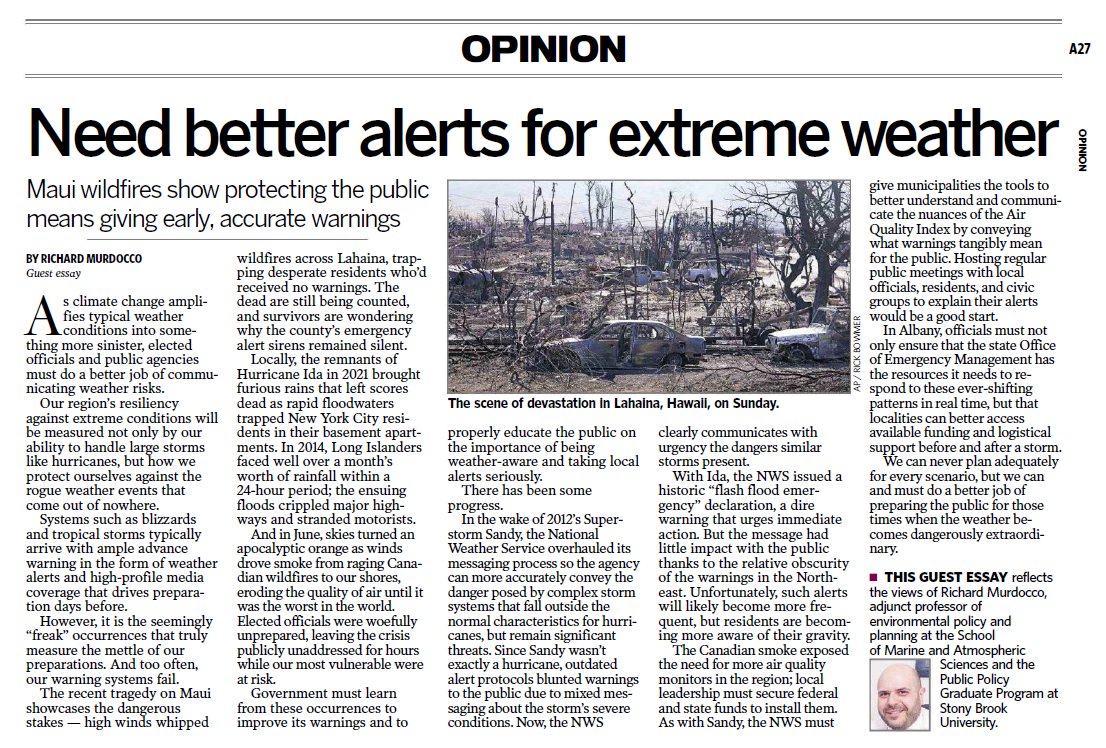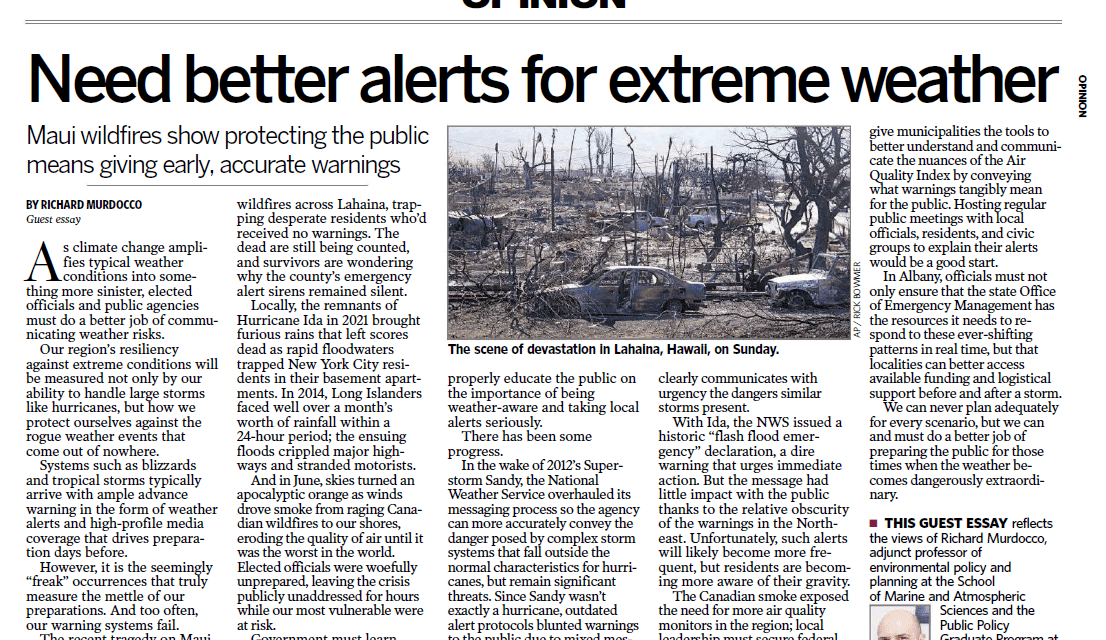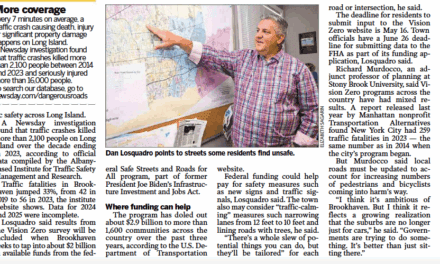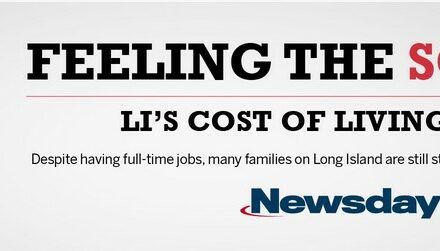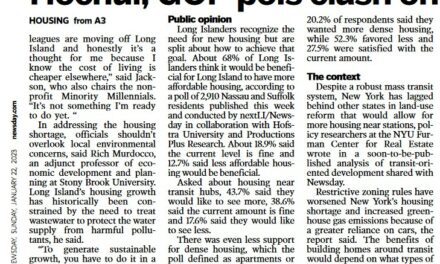The following guest essay was published in the Wednesday, August 16th, 2023 edition of Newsday on page A27. You can read the original here.
Maui wildfires show protecting the public means giving early, accurate warnings
BY RICHARD MURDOCCO
As climate change amplifies typical weather conditions into something more sinister, elected officials and public agencies must do a better job of communicating weather risks.
Our region’s resiliency against extreme conditions will be measured not only by our ability to handle large storms like hurricanes, but how we protect ourselves against the rogue weather events that come out of nowhere.
Systems such as blizzards and tropical storms typically arrive with ample advance warning in the form of weather alerts and high-profile media coverage that drives preparation days before.
However, it is the seemingly “freak” occurrences that truly measure the mettle of our preparations. And too often, our warning systems fail.
The recent tragedy on Maui showcases the dangerous stakes — high winds whipped wildfires across Lahaina, trapping desperate residents who’d received no warnings. The dead are still being counted, and survivors are wondering why the county’s emergency alert sirens remained silent.
Locally, the remnants of Hurricane Ida in 2021 brought furious rains that left scores dead as rapid floodwaters trapped New York City residents in their basement apartments. In 2014, Long Islanders faced well over a month’s worth of rainfall within a 24-hour period; the ensuing floods crippled major highways and stranded motorists.
And in June, skies turned an apocalyptic orange as winds drove smoke from raging Canadian wildfires to our shores, eroding the quality of air until it was the worst in the world. Elected officials were woefully unprepared, leaving the crisis publicly unaddressed for hours while our most vulnerable were at risk.
Government must learn from these occurrences to improve its warnings and to properly educate the public on the importance of being weather-aware and taking local alerts seriously.
There has been some progress.
In the wake of 2012’s Superstorm Sandy, the National Weather Service overhauled its messaging process so the agency can more accurately convey the danger posed by complex storm systems that fall outside the normal characteristics for hurricanes, but remain significant threats. Since Sandy wasn’t exactly a hurricane, outdated alert protocols blunted warnings to the public due to mixed messaging about the storm’s severe conditions. Now, the NWS clearly communicates with urgency the dangers similar storms present.
With Ida, the NWS issued a historic “flash flood emergency” declaration, a dire warning that urges immediate action. But the message had little impact with the public thanks to the relative obscurity of the warnings in the Northeast. Unfortunately, such alerts will likely become more frequent, but residents are becoming more aware of their gravity.
The Canadian smoke exposed the need for more air quality monitors in the region; local leadership must secure federal and state funds to install them. As with Sandy, the NWS must give municipalities the tools to better understand and communicate the nuances of the Air Quality Index by conveying what warnings tangibly mean for the public. Hosting regular public meetings with local officials, residents, and civic groups to explain their alerts would be a good start.
In Albany, officials must not only ensure that the state Office of Emergency Management has the resources it needs to respond to these ever-shifting patterns in real time, but that localities can better access available funding and logistical support before and after a storm.
We can never plan adequately for every scenario, but we can and must do a better job of preparing the public for those times when the weather becomes dangerously extraordinary.
This guest essay reflects the views of Richard Murdocco, adjunct professor of environmental policy and planning at the School of Marine and Atmospheric Sciences and the Public Policy Graduate Program at Stony Brook University.
